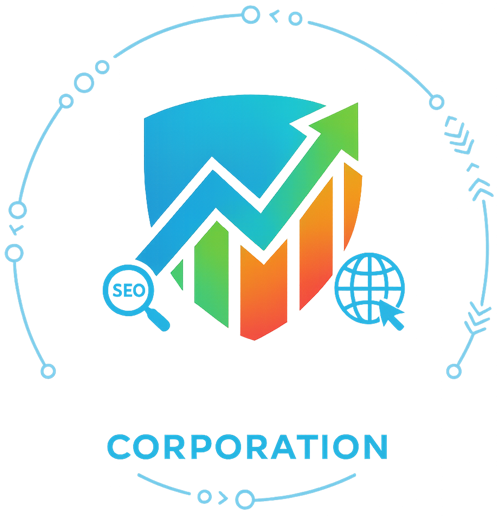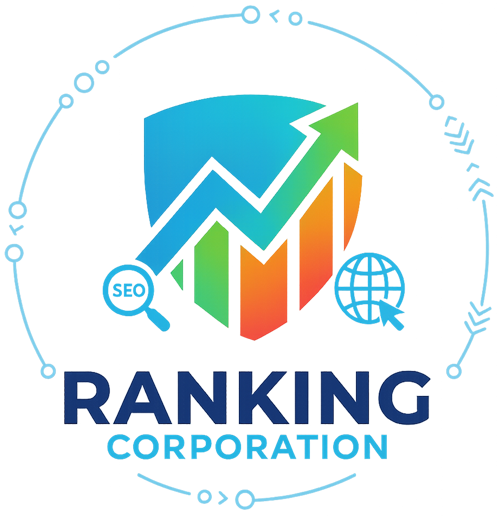
Introduction: The Evolution of Google’s Search Quality Standards
In the fast-paced world of digital marketing, Google’s ranking systems continue to evolve, demanding higher levels of trust, authority, and credibility from every website. For years, SEO professionals focused on keyword optimization, backlinks, and technical performance. While these remain vital, Google has shifted its attention toward a deeper concept: E-E-A-T — Experience, Expertise, Authoritativeness, and Trustworthiness.
Originally introduced as E-A-T in Google’s Search Quality Rater Guidelines, this framework became the benchmark for content quality evaluation. In December 2022, Google expanded the model by adding an extra “E” for Experience, making E-E-A-T the most critical standard for online success in 2025 and beyond.
This comprehensive guide explores the meaning, evolution, and implementation of E-E-A-T — and how mastering it can transform your content strategy, boost visibility, and future-proof your brand’s search rankings.
- Understanding E-E-A-T: What It Really Means
E-E-A-T stands for Experience, Expertise, Authoritativeness, and Trustworthiness — four interdependent qualities that define the credibility of a website or content creator.
Experience
This focuses on first-hand knowledge or practical understanding of a topic. For example, a travel blogger who shares personal experiences from visiting Bali has more experiential credibility than someone summarizing travel guides.
Google values authentic, real-world experience because it ensures the content resonates with users. Experience builds empathy and authenticity — two factors that make readers trust your information.
Expertise
Expertise evaluates the depth of knowledge a creator demonstrates in a specific subject area. It’s not only about professional credentials but also how well the content explains concepts, provides accurate data, and helps users solve problems. In health, finance, and legal niches (YMYL categories), demonstrating expertise is crucial.
Authoritativeness
This measures the overall reputation of the website, content creator, and associated brand. Backlinks from reputable sources, mentions in the media, or recognition from peers contribute to authority. Authoritativeness tells Google: “This source is trusted by others in the field.”
Trustworthiness
Trust is the cornerstone of E-E-A-T. It reflects how reliable, honest, and transparent a website appears. HTTPS security, transparent privacy policies, fact-checked content, and accurate citations all enhance trustworthiness.
Together, these four factors determine whether Google (and users) can rely on your content.
- The History of E-E-A-T: From E-A-T to E-E-A-T
The original E-A-T concept emerged in Google’s Search Quality Rater Guidelines around 2014. The framework guided human evaluators in assessing the quality of search results. However, it wasn’t until the infamous Medic Update in 2018 that E-A-T became widely recognized as a central ranking principle.
In 2022, Google introduced a significant enhancement: Experience. This new addition acknowledged that users value content written by those with real-world exposure. For example:
- A skincare expert who personally uses the products they recommend.
- A mechanic who shares tutorials based on actual repair work.
- A traveler reviewing destinations they’ve physically visited.
By including “Experience,” Google aligned its ranking priorities with authenticity, combating low-quality, AI-generated, or purely theoretical content.
- Why E-E-A-T Matters More Than Ever in 2025
As AI-generated content floods the internet, Google faces the challenge of separating authentic expertise from synthetic noise. E-E-A-T acts as a filter, ensuring that only credible, well-informed, and trustworthy content ranks prominently.
Three Core Reasons E-E-A-T Is Crucial:
- User Trust = SEO Success:
Users are more likely to engage with content they believe in. Higher engagement signals (like dwell time and CTR) boost rankings. - AI Content Saturation:
With AI tools producing massive volumes of text, Google prioritizes human-validated expertise and real experiences. - YMYL (Your Money or Your Life) Standards:
For topics impacting health, finance, or safety, E-E-A-T directly influences visibility. Inaccurate or misleading content risks de-ranking or manual action.
In short, mastering E-E-A-T is no longer optional — it’s essential for long-term SEO resilience.
- Breaking Down Each Pillar of E-E-A-T
4.1 Experience: Real-World Knowledge That Resonates
To show experience, brands should:
- Include personal stories, testimonials, or real case studies.
- Use original photos or videos instead of stock imagery.
- Mention first-hand experiences using products, services, or locations.
- Highlight author bios with verifiable credentials or relevant experience.
Example:
A dentist writing about “Teeth Whitening Techniques” should describe actual patient results (with permission), adding credibility that a generic writer cannot match.
4.2 Expertise: Show, Don’t Tell
Expertise is demonstrated through depth, accuracy, and clarity. To strengthen it:
- Publish content by specialists with proven credentials.
- Include data-backed insights, charts, and statistics.
- Reference authoritative external sources like research papers or industry studies.
- Use proper terminology while keeping the content understandable.
Tip: Expert content is not necessarily complex — it’s precisely informative and backed by facts.
4.3 Authoritativeness: Building Your Online Reputation
Authority grows when other credible sources recognize your expertise.
To boost authority:
- Earn high-quality backlinks from niche-relevant websites.
- Collaborate with industry influencers or recognized professionals.
- Appear in reputable publications or podcasts.
- Encourage satisfied clients to leave verifiable reviews.
Authority is cumulative — built through consistency, credibility, and recognition.
4.4 Trustworthiness: The Foundation of It All
Trust is the factor that ties everything together.
Here’s how to strengthen it:
- Use HTTPS and secure payment gateways.
- Be transparent about ownership, editorial policies, and affiliations.
- Keep your content factually accurate and regularly updated.
- Respond to customer feedback professionally.
- Avoid misleading or exaggerated claims.
Remember: Google may forgive limited experience, but never a lack of trust.
- How Google Measures E-E-A-T
While E-E-A-T isn’t a direct ranking factor, Google’s algorithms indirectly assess it through hundreds of signals, including:
- Quality Rater Guidelines (human evaluations influence AI models).
- Backlink authority and anchor text relevance.
- Author entity recognition in Knowledge Graphs.
- Content engagement metrics (CTR, dwell time, bounce rate).
- Sentiment analysis across reviews and mentions.
Machine Learning and E-E-A-T
Google’s AI systems, like RankBrain and BERT, analyze content contextually. They look for expert patterns — how professionals explain topics, cite evidence, and structure arguments. This behavioral modeling helps Google reward credible content.
- Implementing E-E-A-T on Your Website
Here’s a step-by-step guide to making your site E-E-A-T-compliant:
Step 1: Showcase Author Credentials
- Create detailed author bios with photos, qualifications, and links to verified social profiles.
- Include schema markup (Person and Author) to help Google connect expertise with identity.
Step 2: Improve Content Accuracy
- Use data from trusted sources (government, academic, or leading industry sites).
- Cite original research and statistics.
Step 3: Build a Transparent Brand
- Display “About Us,” “Contact,” and “Editorial Policy” pages.
- Add trust seals, certifications, or industry memberships.
Step 4: Collect Reviews & Mentions
- Encourage satisfied clients to leave Google and third-party reviews.
- Feature testimonials with real names and photos.
Step 5: Maintain Consistency
- Regularly update old articles.
- Audit your site quarterly for factual accuracy and link freshness.
- Content Strategy for E-E-A-T Optimization
An E-E-A-T-focused content strategy aligns your editorial goals with credibility and user trust.
Create Original Value
Don’t just summarize — contribute unique insights or new data. Conduct surveys, publish whitepapers, or present original case studies.
Use Structured Data
Schema markup helps Google understand the relationships between your authors, content, and expertise.
Diversify Content Formats
Videos, infographics, podcasts, and expert interviews enhance authenticity and engagement.
Establish Thought Leadership
Guest post on reputable sites, participate in webinars, and quote industry leaders to strengthen your author profile.
- E-E-A-T and Link Building: The Trust-Authority Connection
Link building remains essential, but the focus has shifted from quantity to quality and relevance.
Best Practices:
- Earn backlinks from niche-relevant websites with strong domain authority.
- Leverage digital PR to get mentions from news outlets.
- Use HARO (Help a Reporter Out) for expert commentary opportunities.
- Avoid link farms or private networks that could damage trust.
E-E-A-T Tip:
When authoritative sites link to your content, they pass “trust signals” — improving both ranking potential and user perception.
- Measuring Your E-E-A-T Performance
Though not directly quantifiable, you can evaluate E-E-A-T progress through proxy metrics:
| Factor | Metric to Monitor |
| Expertise | Keyword rankings, topical authority score |
| Experience | Engagement rate, dwell time, CTR |
| Authoritativeness | Referring domains, media mentions |
| Trustworthiness | Review sentiment, bounce rate, HTTPS compliance |
Tools to Help
- Google Search Console (impressions, CTR)
- Ahrefs / Semrush (backlinks, authority score)
- Brand24 / Mention (brand reputation monitoring)
- Surfer SEO or Clearscope (content quality optimization)
- E-E-A-T for YMYL Websites
“Your Money or Your Life” (YMYL) websites — those affecting a person’s health, safety, or financial stability — are held to the highest E-E-A-T standards.
Examples:
- Medical or wellness blogs
- Financial advice websites
- Legal consultation services
For YMYL niches:
- Ensure licensed professionals author the content.
- Add disclaimers where applicable.
- Keep all information fact-checked and medically reviewed.
- Maintain transparent sourcing and update frequency.
Failure to meet these standards can lead to severe ranking losses or content suppression.
- E-E-A-T and AI-Generated Content
AI tools like ChatGPT, Gemini, and Jasper are transforming content creation. However, Google emphasizes that AI-assisted content is acceptable only if it’s accurate, original, and trustworthy.
To maintain E-E-A-T in AI workflows:
- Always add human oversight and editing.
- Include factual verification.
- Attribute sources properly.
- Use AI for efficiency, not replacement of expertise.
E-E-A-T compliance ensures AI content contributes positively to SEO rather than risking penalties.
- E-E-A-T and Brand Reputation
Brand reputation and E-E-A-T are intertwined. Google evaluates online sentiment through reviews, mentions, and feedback.
Improve brand reputation by:
- Encouraging honest reviews and addressing negative ones promptly.
- Participating in community discussions.
- Maintaining transparency on pricing, policies, and services.
Positive brand perception reinforces both trust and authority.
- Common E-E-A-T Mistakes to Avoid
- Publishing Anonymous Content: Google devalues content without author identity.
- Neglecting Fact-Checking: Misinformation instantly lowers trust.
- Outdated Pages: Old data signals neglect.
- Fake Reviews or Testimonials: Easily detectable and punishable.
- Ignoring User Intent: Expertise is meaningless without addressing real search needs.
- Future of E-E-A-T: Preparing for What’s Next
E-E-A-T is evolving with AI and personalization. Future ranking systems will likely integrate:
- Entity-based search understanding (Google recognizing authors as experts).
- Voice and visual E-E-A-T (credibility in video and audio formats).
- Verified identity ecosystems to combat misinformation.
The brands that combine data accuracy, user empathy, and authentic experience will dominate the next decade of search.
- Real-World Examples of E-E-A-T in Action
- Healthline: Medical content written and reviewed by doctors with clear credentials and citations.
- NerdWallet: Financial guides authored by certified experts and fact-checked for accuracy.
- TripAdvisor: User-generated reviews showcasing real travel experiences.
These platforms consistently demonstrate that transparent expertise drives trust, engagement, and rankings.
- Step-by-Step Checklist for E-E-A-T Success
✅ Add author bios with credentials and photos.
✅ Ensure HTTPS and transparent policies.
✅ Fact-check all data and include citations.
✅ Build backlinks from relevant authority domains.
✅ Encourage genuine customer reviews.
✅ Update content quarterly.
✅ Use structured data for authorship.
✅ Monitor brand mentions and online reputation.
Following this checklist transforms your website into a trustworthy authority hub that Google values.
- The Connection Between E-E-A-T and Content Experience (CX)
Search isn’t just about keywords — it’s about how users feel while consuming content. A positive Content Experience (CX) enhances perceived expertise and trust.
To optimize CX:
- Improve readability (short paragraphs, visuals, headers).
- Use a consistent tone that reflects confidence and empathy.
- Provide clear takeaways and actionable tips.
- Avoid intrusive ads or pop-ups.
When users enjoy reading your content, Google rewards it with stronger engagement metrics.
- E-E-A-T and Technical SEO: The Overlooked Duo
Technical SEO supports E-E-A-T by ensuring reliability and usability.
Key technical factors that reinforce trust:
- Secure HTTPS implementation
- Fast page load times
- Mobile responsiveness
- Clean site architecture
- No broken links or 404 errors
A technically sound website signals professionalism — a silent yet powerful trust indicator.
- How Agencies Can Offer E-E-A-T-Focused SEO Services
Modern SEO agencies must adapt their strategies to E-E-A-T standards.
Core services include:
- E-E-A-T audits: Reviewing content, authorship, and reputation.
- Expert content development: Partnering with verified professionals.
- Reputation management: Monitoring reviews and mentions.
- Schema integration: Mapping author and brand entities.
Agencies that master E-E-A-T will lead the next era of SEO consulting.
- Conclusion: E-E-A-T as the New SEO Imperative
E-E-A-T isn’t a passing trend — it’s the new foundation of search ranking success.
By focusing on Experience, Expertise, Authoritativeness, and Trustworthiness, you align your brand with Google’s long-term vision: delivering reliable, people-first content.
Mastering E-E-A-T means mastering trust. Whether you’re an SEO expert, content creator, or business owner, adopting this framework will safeguard your visibility, strengthen your reputation, and future-proof your search strategy in a world of algorithmic uncertainty.
Final Key Takeaways
- E-E-A-T defines content quality in Google’s eyes.
- Experience and authenticity now matter as much as expertise.
- Trustworthiness is non-negotiable.
- Technical SEO, content, and brand reputation must align.
The future belongs to brands that are real, reliable, and relatable





